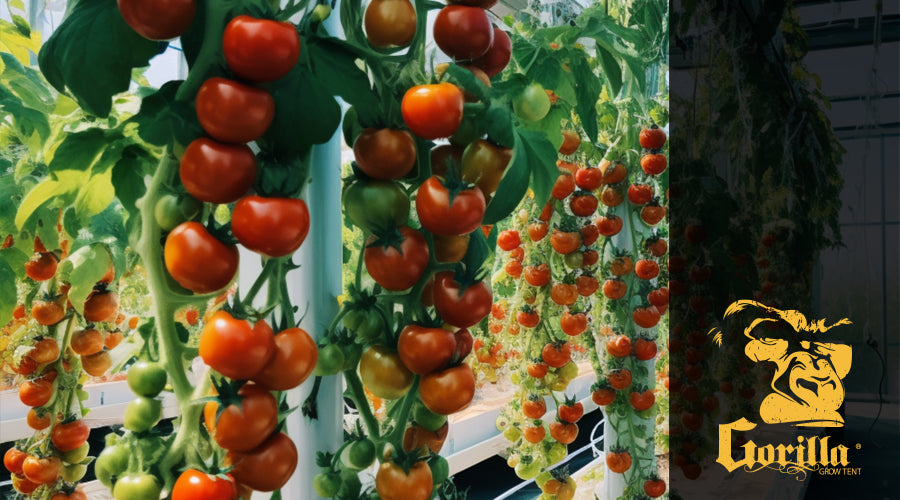
Hydroponic Lettuce: A Beginner's Guide to Growing Your Own Crisp Greens

Imagine enjoying the freshest, most flavorful lettuce right from your own home, all thanks to the wonders of hydroponics. Hydroponic lettuce, grown without soil, is not only a rewarding endeavor but also a sustainable and space-efficient way to cultivate your own produce. Whether you're a seasoned gardener or a curious novice, this comprehensive guide will equip you with the knowledge and techniques to embark on your hydroponic lettuce journey.
Delving into Hydroponics: The Soil-less Approach
Hydroponics, the art of cultivating plants without soil, offers a unique and innovative approach to gardening. By immersing plant roots in a nutrient-rich solution, hydroponics delivers essential nutrients directly to the roots, promoting rapid growth and optimal health. This method eliminates the need for soil, circumventing soil-borne diseases and pests and ensuring consistent nutrient uptake.
Lettuce: The Ideal Hydroponic Candidate
Lettuce, with its quick growth cycle and adaptability to various hydroponic systems, makes an excellent choice for beginners. Leaf lettuce varieties, such as butterhead, romaine, and loose-leaf lettuce, are particularly well-suited for hydroponic cultivation due to their shallow root systems and tolerance for a wide range of nutrient levels.
Essential Hydroponic Systems: Choosing Your Lettuce Oasis
Selecting the right hydroponic system for your lettuce cultivation journey is an essential step in ensuring a successful and rewarding experience. Each system offers unique advantages and considerations, making it crucial to choose one that aligns with your experience level, space constraints, and desired outcomes.
Deep Water Culture (DWC):
DWC is a beginner-friendly system that involves suspending plant roots in a nutrient-rich solution. Its simplicity and effectiveness make it a popular choice for home hydroponic growers.
Advantages:
Easy to set up and maintain
Efficient nutrient uptake
Minimal space requirements
Considerations:
Requires regular monitoring of nutrient solution levels
Roots may become tangled if not properly managed
Nutrient Film Technique (NFT):
NFT continuously circulates a thin layer of nutrient solution over the roots, promoting efficient nutrient uptake and oxygenation. This method is particularly well-suited for lettuce cultivation.
Advantages:
Efficient nutrient and oxygen delivery
Reduced risk of root diseases
Suitable for a wide range of lettuce varieties
Considerations:
Requires a pump and tubing system
May be more complex to set up and maintain than DWC
Aeroponics:
Aeroponics suspends plant roots in an air-filled chamber and misted with a fine spray of nutrient solution. This method provides maximum oxygenation to the roots and is particularly well-suited for fast-growing plants like lettuce.
Advantages:
Excellent oxygenation for rapid growth
Reduced risk of root diseases
Suitable for a wide range of lettuce varieties
Considerations:
Requires specialized equipment and more precise control of nutrient levels
May be more complex to set up and maintain than DWC or NFT
Factors to Consider When Choosing a Hydroponic System:
Experience Level:
DWC and NFT are beginner-friendly systems, while aeroponics may be more suitable for experienced growers.
Space Constraints:
DWC and NFT are relatively compact systems, while aeroponics may require more vertical space.
If simplicity and ease of use are priorities, DWC is a good choice.
If rapid growth and maximum oxygenation are desired, aeroponics is a suitable option.
If efficient nutrient uptake and a balance of simplicity and effectiveness are important, NFT is a good choice.
Setting the Stage for Hydroponic Success
Before embarking on your hydroponic adventure, gather essential supplies:
Hydroponic system: Choose a system that suits your experience level and space.
Growing medium: Options include perlite, rockwool, and coco coir, providing support for plant roots.
Nutrient solution: Select a pre-mixed formula or create your own using specific nutrient salts.
Lighting: Ensure adequate light intensity and duration, mimicking natural sunlight.
Planting Your Hydroponic Lettuce Seeds
Germinate seeds: Sow lettuce seeds in a seed starting tray or directly into your hydroponic system.
Transplant seedlings: Once seedlings have developed a few true leaves, carefully transfer them to your hydroponic system.
Maintain nutrient solution: Regularly monitor and replenish the nutrient solution to ensure optimal nutrient levels.
Nurturing Your Hydroponic Lettuce
Nurturing your hydroponic lettuce is an essential aspect of ensuring a bountiful harvest of crisp, nutritious greens. By providing your lettuce plants with optimal growing conditions and attentive care, you can cultivate a thriving hydroponic garden that yields delicious lettuce throughout the year.
Maintain Optimal Nutrient Levels:
Regularly monitor the nutrient solution in your hydroponic system and replenish it as needed. The specific nutrient requirements for your lettuce variety may vary, so consult a reliable source for the recommended nutrient solution concentration.
Provide Adequate Lighting:
Lettuce plants require ample light for photosynthesis, which is the process by which they convert light energy into chemical energy for growth. Ensure your hydroponic system receives at least 12-14 hours of light per day. Consider using high-quality LED grow lights to provide the necessary light intensity and spectrum.
Control Temperature and Humidity:
Lettuce thrives in a temperature range of 60-70°F (16-21°C) during the day and slightly cooler temperatures at night. Maintain a relative humidity level of around 50-60%. Adjust your growing environment accordingly using fans, heaters, or humidifiers.
Monitor Water Quality:
The quality of your hydroponic nutrient solution is crucial for healthy plant growth. Use filtered water to prepare the nutrient solution and ensure the pH level remains within the optimal range for lettuce, typically between 5.5 and 6.5.
Monitor for Pests and Diseases:
Regularly inspect your lettuce plants for signs of pests or diseases. Common pests include aphids, thrips, and whiteflies. Common diseases include botrytis, lettuce mosaic virus, and downy mildew. If you notice any pests or diseases, isolate the affected plants and take appropriate measures to control them.
Harvest Regularly:
Harvesting lettuce regularly encourages continued growth and prevents overcrowding. Harvest lettuce leaves when they reach a desirable size, typically around 6-8 inches in length. Cut the leaves from the base, leaving the stem intact for further growth.
Maintain System Cleanliness:
Regularly clean your hydroponic system to prevent the buildup of algae, bacteria, and other contaminants. Clean the growing medium, reservoirs, and pumps regularly to maintain optimal hygiene.
Provide Airflow:
Adequate airflow around your lettuce plants helps prevent moisture stagnation and reduces the risk of fungal diseases. Ensure there is sufficient air circulation in your hydroponic system.
Prune Regularly:
Regular pruning helps maintain healthy lettuce plants and encourages new growth. Remove any damaged, diseased, or overcrowded leaves to promote better air circulation and prevent nutrient depletion.
Harvesting the Rewards of Your Hydroponic Labor
Within a few weeks, your hydroponic lettuce will be ready for harvest. When the leaves reach a desirable size, gently cut them from the base, leaving the stem intact for additional growth.
Hydroponic Lettuce: A Sustainable and Healthy Choice
Hydroponic lettuce cultivation offers numerous benefits, including:
Reduced water consumption: Hydroponics uses less water compared to traditional soil-based methods.
Minimal pesticide use: By eliminating soil-borne pests, hydroponics minimizes the need for pesticides.
Year-round cultivation: Hydroponic systems allow you to grow lettuce indoors, regardless of the season.
Enhanced nutrient uptake: Hydroponics delivers nutrients directly to the roots, promoting faster growth and higher nutrient content.
Embrace the Hydroponic Adventure: Cultivate Lettuce with Confidence
Hydroponic lettuce cultivation offers a rewarding and sustainable approach to growing your own fresh, flavorful produce. With proper preparation, care, and attention, you can transform your home into a thriving hydroponic lettuce oasis. Embrace the hydroponic adventure and relish the satisfaction of enjoying your homegrown lettuce creations.


